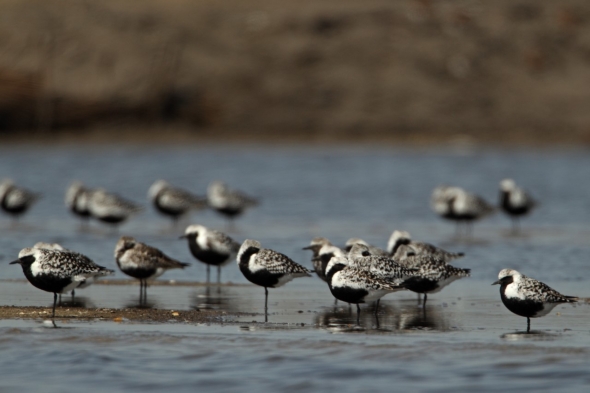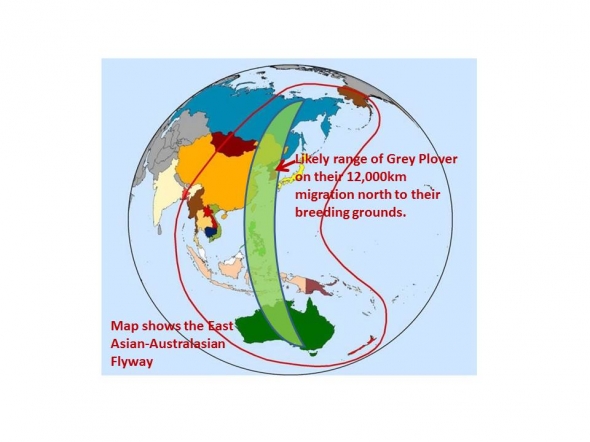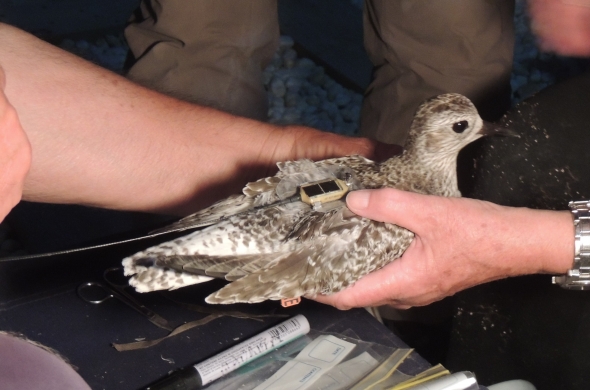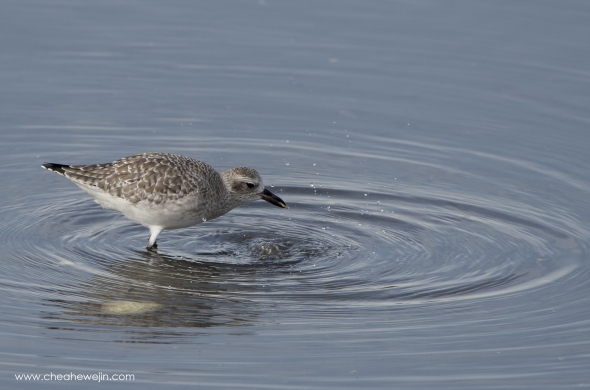Tracking the Grey Plover's journey
The Grey Plover is a special and unusual migratory shorebird that we know very little about. It is the largest plover we have in Australia. We know that they migrate an amazing 12,000km to breed in northern Siberia and Alaska during the northern summer and return to spend our summer in Australia. The Australian coastline hosts around 12,000 Grey Plovers from September to March each year. However nearly all the population in Australia is female which makes their migration even more mysterious. Why do females migrate to Australia, but males apparently don’t?
We aim to use satellite tracking to find out some of the answers to these questions.
Our plan is to follow at least three Grey Plovers using satellite tracking technology in the 2015/16 migratory season to answer the mysteries of Grey Plover migration. And you will be able to follow them too!

A key aim of this program is to identify migratory routes and stopover sites. We can then build on this for further work to identify if these are regular habitats/routes used by the birds. The other key aim is to identify the breeding areas used by these birds.
Most migratory shorebirds leave Australia in March and April, travel in big numbers, and use well known routes and stop-over locations such as the Yellow Sea in China. But not the Grey Plover it seems. We believe they travel in smaller numbers, but the information from bird-banding studies and leg flag sightings is limited. We have no knowledge of where Grey Plover breed or any stopover sites for refuelling north of the Yellow Sea. We thus cannot assess the threats they face when they move north past the Yellow Sea.

Grey Plover numbers in Australia are declining, so we need to identify these threats to their migration quickly. Their continued survival depends on these unknown but critical sites, but we cannot assess or improve the conservation status of these sites until they have been located.
With the arrival of light-weight solar powered satellite trackers we are now able to track the journey of the Grey Plover. Satellite tracking allows us to build knowledge and data in real time that will help inform what can be done to help them survive in the future.

And at the same time satellite tracking allows everyone to follow the migration tracks of the Grey Plovers from the comfort of their own home! Tracing their individual journeys on a global map on the web means we can all see for ourselves the impact of this research, the route these birds take and where their breeding grounds are located, all in real time.
We aim to get the project started as soon as Grey Plovers return to Australia in late 2015 and will follow their journeys throughout the 2016 migration and breeding season. Although we are planning to attach satellite trackers on at least three birds, if the funds allow it, we will increase this to up to five birds.

With thanks to Ady Boyle, Eugene Cheah, Maureen Christie, Ken Gosbell, Danny Rogers and Dan Weller for Grey Plover images and maps.
How The Funds Will Be Used
Transmitters – purchase and attach the minimum 3 trackers = $15,000
Costs associated with locating birds etc. = in kind/volunteer time
Web-based tracking map - Develop and maintaining so that
everyone can follow progress = $1000
Rewards fulfilment = $1000
Pozible admin fee (4% ) = $680
We’re setting our target to cover costs for running three trackers, but ideally, we’d like to be running five trackers next season as this would provide an excellent dataset and guard against data failure if any of the trackers fail.
Any funds pledged beyond the target will be put to good use – we’ll be able to buy, attach and follow more trackers which all goes to helping the birds' future.
The Challenges
Shorebirds ID Booklet
Covering all 50 shorebird species that occur regularly in Australia, this pocket sized booklet contains excellent identification graphics for each species, where you are likely to see them, and tips for easy identification. Produced with support from the Australian Government's Caring for our Country initiative.
BirdLife Australia member
One year's membership. Receive our award winning quarterly magazine, Australian Birdlife, jam-packed with a host of beautiful photos and fascinating articles about our native birds and their conservation; discounts on CSIRO publications, Birdlife courses and accomodation at our reserves and observatories in Australia ; join in local branch activities free of charge.
Shorebird Image on Canvas
Imagine a beautiful shorebird image hanging on your wall all year round. 50x60cm stretch canvas image, captured by one of our very own dedicated shorebird lovers.
AWSG member for a year
One years free Australian Wader Studies Group membership. Receive exclusive updates on migratory bird movements, research and news, information on shorebirds; and publications Stilt and Tattler. Join a Shorebirds expedition and learn how we monitor shorebird activity in Australia.
Bird Naming Rights
Name your bird! You get to choose the name for one of the birds we'll be tracking. Your bird's name will appear in all stories and coverage and on the tracking map. Imagine being able to show your friends and family where in the world YOUR Grey Plover is at any given time!